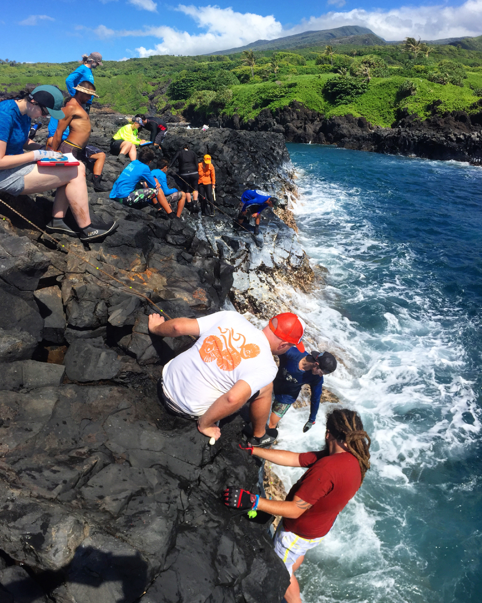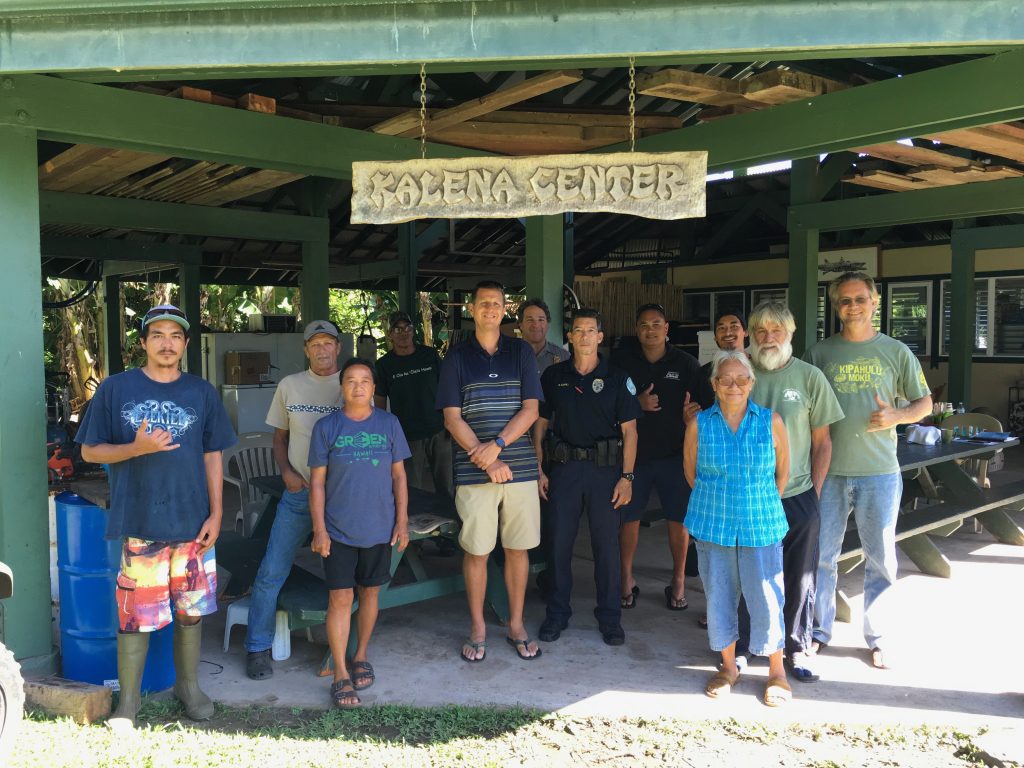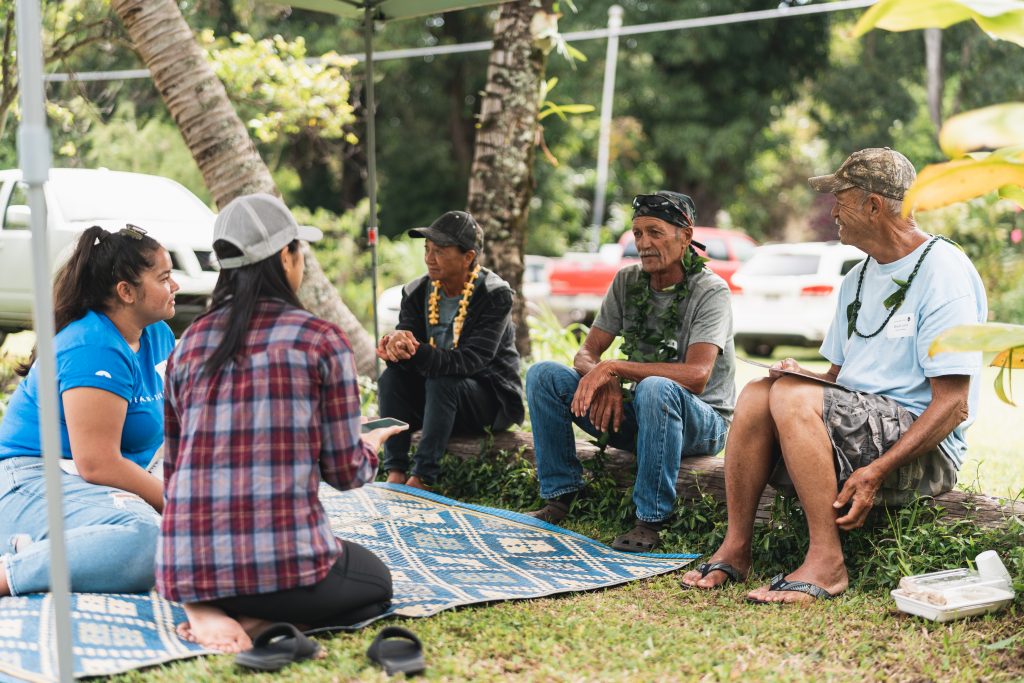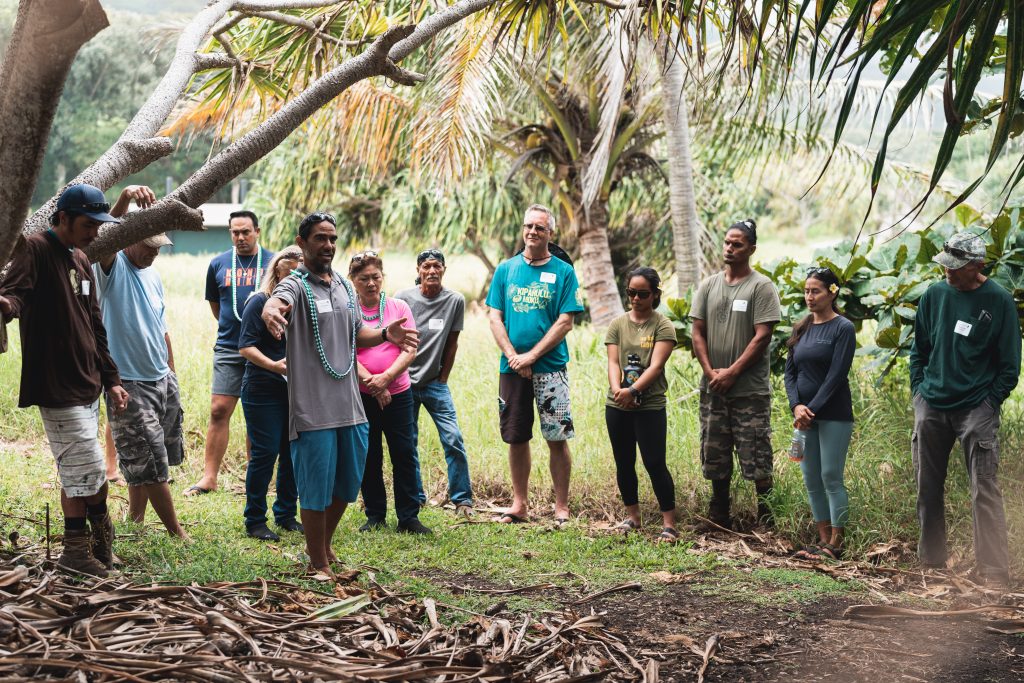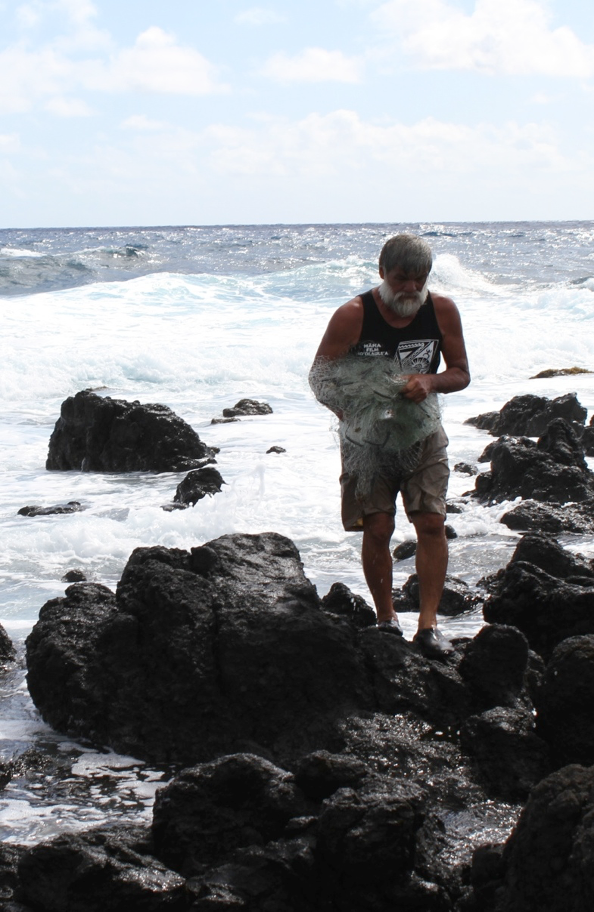Kīpahulu in East Maui becomes Hawaiʻi’s third Community-Based Subsistence Fishing Area
Today, after nearly 30 years of grassroots community planning and engagement within their moku and across Maui and the state, Hawaiʻi nonprofit organization Kīpahulu ‘Ohana, Inc. saw their Community-Based Subsistence Fishing Area (CBSFA) signed into law.
Gov. Josh Green signed administrative rules on Friday, March 15 to make Kīpahulu in East Maui the state’s third CBSFA, following Hā‘ena on Kaua‘i and Miloli‘i on Hawai‘i Island.

The Kīpahulu CBSFA is located in the moku of Kīpahulu in East Maui along a 5.7-mile stretch of coastline from Kālepa to Pua‘alu‘u Gulch and extending seaward from the high-water mark on the shoreline to three points roughly along the 60-meter depth contour and about a quarter- to half-mile from shore.

Rules for the CBSFA are designed by the community in co-management with the Division of Aquatic Resources (DAR) to perpetuate, protect, and reaffirm traditional and customary practices of that place for the purposes of Native Hawaiian subsistence, fishing, and culture, as well as to better manage makai resources.
As part of the long and process to designate a CBSFA, the Kīpahulu rules package went to public hearing in November 2023 and was met with unanimous support from 88 testimonies including 54 individuals, three government agencies, five elected officials and 24 organizations. All testimony was in full support of the proposed rules and underlined the importance of community stewardship and management of resources.
In January, the Board of Land and Natural Resources (BLNR) applauded the collaborative efforts of the Kīpahulu community and DAR and unanimously approved the designation.
“We honor our kūpuna who have paved the way for us. Today’s win also honors our community, our people’s connection to place, and reaffirms our collective commitment to aloha ʻāina and to protect our resources in perpetuity,” said Kamalei Pico, Executive Director of KOI. “Mahalo nui to BLNR Chair Dawn Chang, and the DAR team of Brian Neilson, Luna Kekoa, Keali‘i Sagum, Adam Wong, and David Sakoda, and Gov. Green’s administration for their support in seeing this through.”

CBSFAs create a policy of co-management between community organizations and the state and allows rules to be determined by the traditional customary practices of the place. Management is further supported by the best of contemporary science. However, it has taken community groups over 10 years on average to navigate the CBSFA designation process from start to finish.
“It’s taken us too long to get here,” said Kīpahulu ʻOhana Board President Mike Minn. “I hope that other communities looking toward establishing Community-Based Subsistence Fishing Areas within their own communities don’t have to go through the same length of time we did.”

Since 2013, Kīpahulu ‘Ohana kept a meticulous record of all their efforts to educate and gather feedback on their CBSFA proposal from East Maui residents, fishers, legislators, and the general public. Their records show that they’ve reached over 250,000 people from across the world through their outreach efforts.
“Although the process took longer than it could have, the overwhelming positive support shows the result of thorough and consistent community outreach. It is important that fishers understand the reasons behind the rules, and follow them because they want to fish pono to ensure the lifestyle for future generations,” said former Kīpahulu ‘Ohana E.D. Scott Crawford and resident of Hāna who now supports this effort from his role as Maui Marine Director with The Nature Conservancy.
Kīpahulu’s efforts were bolstered by the long-term faith and support of networks like the Maui Nui Makai Network, Kai Kuleana Network, and Kuaʻāina Ulu ʻAuamo’s (KUA’s) E Alu Pū Network and Lawai‘a Pono Hui, who share a belief in the long term benefits of community-based fishery management efforts in Hawaiʻi.
KUA Executive Director, Kevin Chang, expressed hope for the future through this CBSFA signing, “KUA was founded in part by kūpuna of Kīpahulu ʻOhana, and over the years we continue to support efforts to establish and maintain CBSFAs across Hawaiʻi, first with Hāʻena, then in Miloliʻi, now in Kīpahulu, and hopefully soon in Moʻomomi. To witness the broad community support and partnerships developed through Kīpahulu’s journey to establish their CBSFA is so uplifting, and we are hopeful that this will inspire even more communities to take similar actions to protect our shared biocultural resources.”
Kīpahulu ‘Ohana’s efforts are part of the legacy of a long held vision of kūpuna, like Uncle John and Aunty Tweetie Lind, Uncle Mike Minn, and many others across the state to aloha ʻāina from the ground up.
Kīpahulu ‘Ohana acknowledged other CBSFA efforts of Hui Maka‘āinana o Makana in Hā‘ena, Kalanihale in Miloli‘i, and the continued efforts at Mo‘omomi, Moloka‘i, which was where the first CBSFA was piloted from 1994 to 1996, and where Kelson “Mac” Poepoe was the first Native Hawaiian fisher to lead the effort for CBSFA rule-making.
“CBSFAs are just one tool we have long believed could further the vision for ʻāina momona and strengthen communities that depend on the resources of their areas the most,” said Pico. “The foundation of Kīpahulu’s CBSFA was developed upon generational knowledge of our place attained through observations of kūpuna and lawaiʻa, traditional kumukānāwai (codes of conduct) and Native Hawaiian cultural values that govern pono fishing practices. Other communities, especially in the East Maui region, are looking to Kīpahulu’s CBSFA as a model for setting their unique kahua (foundations) and developing strategic fisheries management plans for their own moku.”
As Uncle John Lind would say, “we’re all family across all the moku of East Maui. We all have the same issues. We all need to work together.” Organizers pointed to an Ōlelo Noʻeau that says, “ʻOiʻoi ʻo Maui Hikina” (Maui Hikina forges ahead), alluding to the resilience and independence of a steadfast community.







